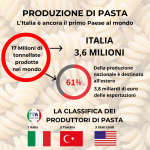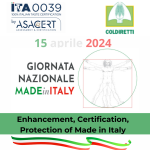The reopening of restaurant activities did not seem exactly a party, although the Italians’ passion for restaurants and good food are no secret.
The world of catering is a great asset of our economy. In the past 10 years, Italians have spent more and more on eating out, reducing the resources destined for grocery and home cooking.
The data are clear: with 46 billion euros the varied world of restaurants represents the first component of the added value of the agri-food chain. The millions of tourists who came to Italy and which we hope will return soon, considered catering and hospitality among the levers of greatest attraction and satisfaction of our country.
Thanks to the crisis generated by the pandemic, we will see an increase in the already high mortality rate of the activities. There are some structural problems in the restaurant market: after one year 25% of restaurants close; after 3 years, almost one in two venues lowers the shutters, while after 5 years closings affect 57% of bars and restaurants. A figure that thickens if we consider the low productivity of this sector. The motivation, however, lies in the plagues of commercial abusiveness and unfair competition. Above all, activities without spaces, without staff, without services, especially in the historical centers of the larger cities, are growing. According to the latest available census, 336 thousand catering businesses are currently active. 112,441 are managed by women who choose in one case out of two to open a restaurant. 56,606 companies are managed by young people under 35. Finally, 45,000 companies have foreign partners or owners. Over the past 10 years, jobs, measured in work units, bars and restaurants, have grown by 20%, compared to a drop in total employment of 3.4%. (Fipe data 2019)
Despite everything, the reopening of bars, restaurants, pizzerias, patisseries and ice cream parlors has a snowball effect on the national agri-food sector with the resumption of purchases of food and drinks which is worth at least 20 billion a year at full capacity (Coldiretti estimates).
The reopening is also strategic for the 24 thousand Italian agritourisms that, thanks to the mild season, the mainly open air spaces and limited availability, are the places where it is easier to guarantee compliance with the safety measures and where to appreciate the specialties of the Made in Italy food and wine tradition in Italy.
Wine consumption will also take a breath: the reopening of restaurants and the out-of-home sector is worth 6.5 billion euros for the wine sector.
But will the Italians go back to eating at the restaurant, among plexigass, masks, spacing and thermometers?
According to the survey of the Vinitaly-Nomisma Wine Monitor Observatory, carried out in April which asked a representative sample of 1000 wine consumers, only 23% of Italians declare that it will go to the restaurant less, compared to 58% for which nothing wil change .
On the revenge spending front, as a reaction to the quarantine, 10% expect to spend more than before on wine to be consumed outside the home, which affects about 45% of the total sales (millennials are the largest estimators). The average price per bottle is 15.4 euros, while the glass costs 5.7 euros.
So let’s drink to the health of the new-found Italian restaurant. Cheers!






